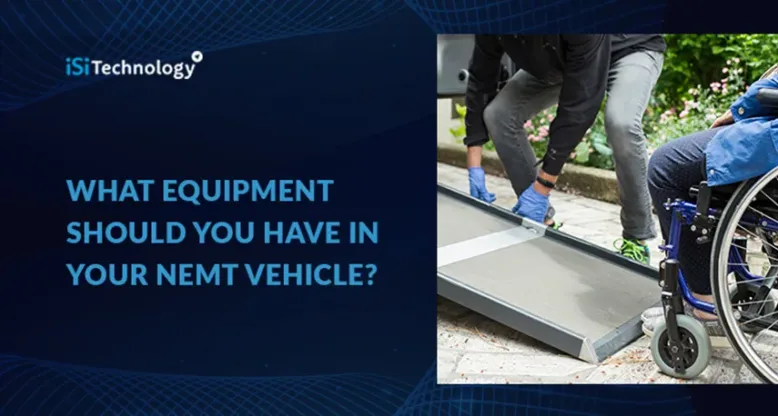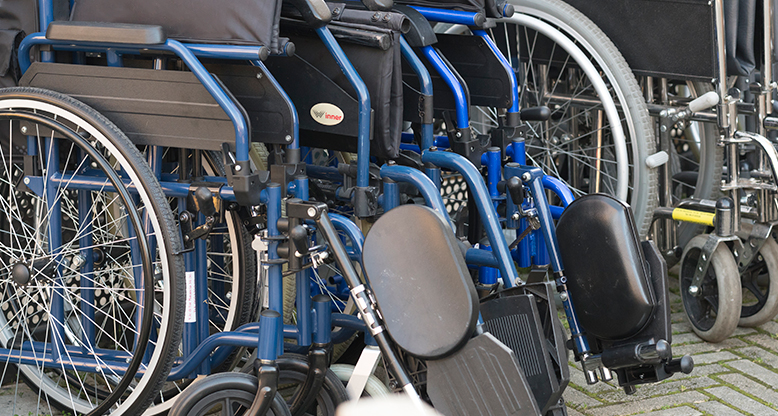What Equipment Should You Have in Your NEMT Vehicle?

You just bought your first NEMT vehicle, and launching your business is looking closer than ever. But wait—you have no equipment in your vehicle, and you definitely need medical supplies on hand, right? Yep. On any given day, you’re working with elderly people, folks who need assistance getting into and out of a vehicle, and passengers who need assistance during their ride. This means you need medical equipment that allows you to effectively transport passengers with varying needs. This can be overwhelming to figure out, so we developed a guideline to point you in the right direction.
Invest in ADA-Compliant NEMT Vehicles
First thing’s first: if you don’t have a vehicle, it’s time to shop around for the perfect ADA-compliant van. If you already have a vehicle, verify that it meets ADA compliance before you hit the road. The following are some basic ADA requirements:
- Handicap lift must be 30” X 40” wide
- Lift door height must be 56”
- Seat belts must have 4-part tie downs with lap and shoulder belts
- Interior lighting must have a one-foot candle of illumination
- Wheelchair attachments must be able to withstand 2,500 pounds of pressure per leg
Popular ADA-Compliant Vans
Once you understand the ADA guidelines you need to meet, you might still feel a little lost on where to look and which vehicle best fits your needs. There are a number of great options on the market, and these are just a few affordable and accessible vans that may suit your needs.
- Ford Transit Wheelchair Van – A full-size wheelchair van with multiple floor plan options that are customizable to your business’s needs.
- Toyota Sienna Wheelchair Van – A rear-entry wheelchair van; one of the most affordable wheelchair vans available.
- Legend Side Entry Handicap Van – A side-entry van with a remote control powered ramp.
Must-Have NEMT Equipment
Since you’re likely to encounter passengers with a variety of different medical needs, you need to make sure you have a diverse inventory of medical supplies to cater to all needs. In the end, you may or may not use all of the equipment. If you get to a point where you’re mostly doing ambulatory trips, you probably won’t need much of this equipment. However, if you’re doing a handful of wheelchair trips, you’ll need wheelchairs and possibly other supplies to safely transport your passengers. Make sure you consider the following medical equipment to have in your vehicles.
Wheelchairs

If you’re taking on wheelchair trips, having wheelchairs in your vehicles is an absolute must. If you have a large fleet, you need them in all of your wheelchair vans, but they won’t be necessary in your ambulatory vehicles. Figure out how many you need, and invest in reliable wheelchairs for your business.
Gurneys
You might not use gurneys on a regular basis, but it’s still good to have them if necessary. A patient may have an injury or chronic illness that makes lying down more comfortable than sitting upright. Even if it’s not something that gets used often, it’s worth having one to avoid losing business simply because you didn’t have one.
Oxygen Tanks
Oxygen tanks are a piece of equipment that fall under the optional category. Sure, they can be useful, and you might find that it’s good to have them on board in case of an emergency; however, if a passenger requires oxygen, they almost always already have an oxygen tank. Your business should decide if an oxygen tank is truly worth the investment or not.
First Aid Kit
You absolutely need a first aid kit in your vehicle when you hit the road. Ideally you won’t have to use anything in the kit often, but the second you need something from that kit, you’ll be glad you have one. Basic first aid kits vary in supplies, but the following are essential items to fill your kit with:
- Sterile gauze pads
- Adhesive tape
- Band-Aids in various sizes
- Antiseptic wipes
- Tweezers
- Ibuprofen
- Alcohol wipes
- Plastic non-latex gloves
- Thermometer
Walkers

Walkers are another useful piece of equipment to consider having in your NEMT vehicles. Passengers who use walkers may use them regularly or periodically. If they’re someone who uses them every so often, they might find that they’re more comfortable walking to and from the vehicle with a walker. These sort of instances make investing in walkers for your business absolutely worth it.
NEMT Software
Non-emergency medical transportation scheduling software is an all-around useful tool to have for your business. It helps manage every trip from beginning to end with broker integrations, smart routing techniques, real-time dispatching, and error-free billing. On top of that, your drivers get access to the best routes and on-demand communication through a built-in driver app, so they can offer the best service possible to every passenger. NEMT software is one of the most important investments you’ll make as an NEMT provider, but it’s important not to make the jump too early. Allow your business time to become established with frequent trip bookings. Once you’re completing a handful of trips daily and have at least five vehicles in your fleet, you should start shopping around for a system that will best handle your needs. This is a business-changing investment, so it’s important to be as thorough as possible in your search. If you’re ready to begin your software search, iSi Technology has a product for you. Get in touch with our talented team to schedule your free demo today!